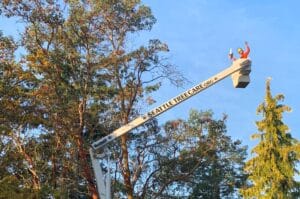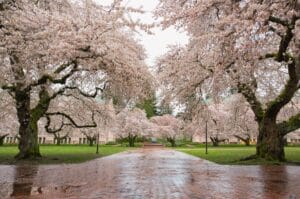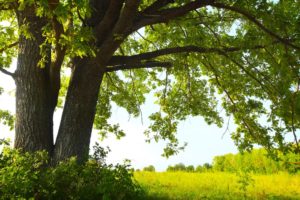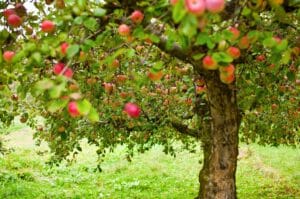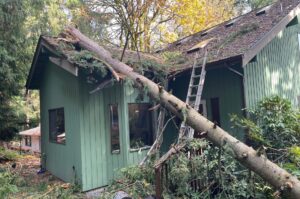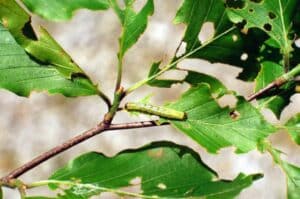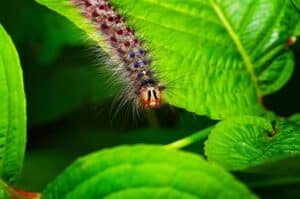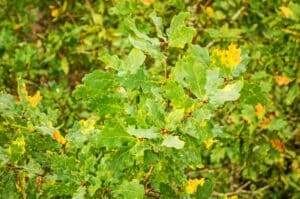Protecting Your Trees from Spongy Moths in Seattle and Puget Sound
Safeguard your Seattle trees from the devastating spongy moth! Get the info you need to fight back against this voracious Seattle tree eater!
Like a thief in the night, the spongy moth threatens the lush greenery of Seattle and Puget Sound. This invasive pest, notorious for its insatiable appetite, poses a significant risk to over 500 tree and shrub species.
So, can they be stopped? This article will shed light on these tree pests and guide you in safeguarding your trees from these hungry invaders.
Spongy Moths in Seattle – Key Takeaways
- Spongy moths (Lymantria dispar) are invasive pests that cause significant damage to the environment and the economy in Seattle.
- Eradication efforts by the Washington State Department of Agriculture have prevented spongy moths from establishing themselves in the area.
- Spongy moths devour the leaves of over 500 species of trees and shrubs, damaging forests, nurseries, and vegetation along water bodies, yards, and parks.
- The economic cost of spongy moths has averaged $30 million per year for the past two decades, mainly due to quarantines imposed on timber and agricultural products.
What is the Spongy Moth?
You should be aware that the spongy moth, a devastating forest pest, can cause significant damage to over 500 different species of trees and shrubs, including those in your Seattle yard. This invasive moth (previously known as the gypsy moth) is known scientifically as Lymantria dispar and is one of America’s worst forest pest insects.
The spongy moth isn’t picky about its food source. It’s a ravenous creature that devours leaves and alters wildlife habitats, affecting the quality of life in communities that experience repeated outbreaks. It’s not limited to forests and nurseries but also threatens vegetation along creeks, rivers, yards, and parks.
Identifying the spongy moth is the first step in protecting your trees. Adult males are light brown, while females are white with dark zigzags on their wings and can’t fly. They lay egg masses of a hundred or more on branches or other sheltered places. Mature larvae are covered in light-colored tufted hairs and have distinctive markings. So, watch out because these pests could be closer than you think.
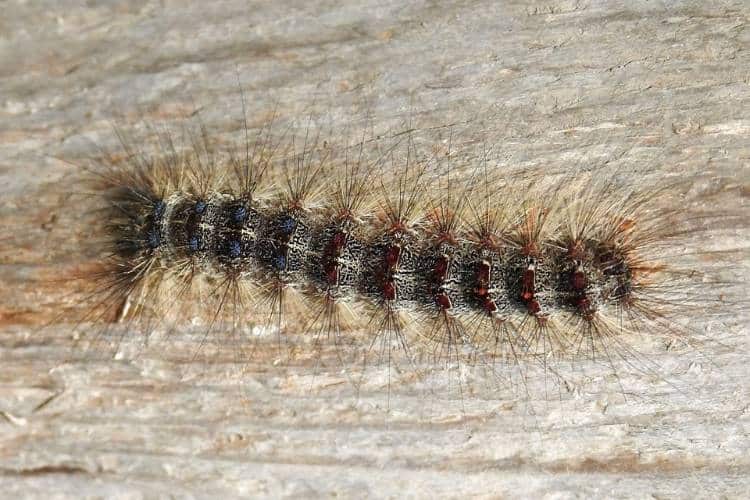
The spongy moth caterpillar is a voracious eater with an indiscriminate appetite for Seattle and Puget Sound trees.
What Seattle Area Trees Do Spongy Moths Affect?
It’s important to know that these invasive pests can devastate various tree species in our region. Spongy moths are not picky eaters. They chew their way through over 500 types of trees and shrubs, leaving a trail of spongy moth damage in their wake.
Some of the most vulnerable trees in the Seattle and Puget Sound area include the Douglas fir, Western hemlock, and Sitka spruce. These majestic trees define our Pacific Northwest landscape and play a crucial role in our ecosystem. The spongy moth’s insatiable appetite doesn’t stop there, though. The pest also feasts on deciduous trees like the bigleaf maple and black cottonwood.
Since the spongy moth’s destructive path doesn’t discriminate, they can ravage urban parks and residential landscapes just as quickly as forested areas. This disrupts wildlife habitats and can significantly alter the character of our beloved Seattle green spaces.
When is the Spongy Moth Most Active in Seattle and Puget Sound?
In the Seattle and Puget Sound regions, be aware that the most active period for these invasive pests typically starts in late spring and continues through summer. This is when they start to hatch from their eggs and begin their destructive feeding patterns on your trees and shrubs.
To protect your trees during this period, consider these steps:
- Monitor your trees closely, especially those vulnerable to gypsy moth infestations.
- Look out for signs of infestation, such as defoliation, egg masses, or the presence of larvae.
- Reach out to a professional arborist if you suspect an infestation. They can provide treatment options to help save your trees.
The fight against the spongy moth is ongoing, and every step you take contributes to preserving the beauty and health of our region’s trees.
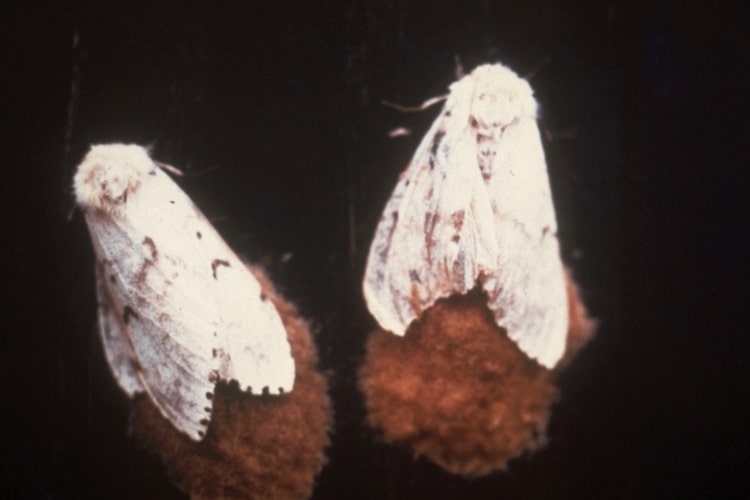
Spongy moth adults are active in the spring and summer months and are identifiable by their eponymous egg cases. Photo by USDA Forest Service – Region 8 – Southern, USDA Forest Service, Bugwood.org
How to Protect Seattle and Puget Sound Trees from the Spongy Moth
There’s a variety of methods we can employ to safeguard our city’s greenery from these destructive pests, including:
- Focus on Proper Tree Care: Healthy trees are less likely to be infested by spongy moths, so regular watering, mulching, and pruning are essential.
- Physical Controls: You can apply sticky bands around the trunks of your trees in early spring. These bands trap the larvae as they climb up the tree to feed.
- Biological Controls: Consider introducing natural predators into your garden, such as birds and certain insects. These predators can help control the spongy moth population.
- Manual Controls: If you spot egg masses on your trees, remove them immediately. You can use a scraper or a stiff brush to dislodge the eggs, then destroy them by soaking them with soapy water.
- Pesticides: You might need to resort to chemical treatments for severe infestations. Always consult with a professional before applying any pesticides. They can guide you on the safest and most effective options.
Remember, we all have a role to play in protecting Seattle’s trees from the invasion of spongy moths and other tree pests. By taking these precautionary measures, we can help preserve our city’s beautiful green spaces for future generations.
Did you spot a spongy moth? Report it to the Washington State invasive species counsel here!
Spongy Moth – Frequently Asked Questions
What are the signs that a tree is infested with spongy moths?
Look for signs like egg masses on branches, which are buff-colored and pale as they age. Mature larvae have light-colored tufted hairs and distinct bumps. Pupae, a dark brick red, hide under tree bark.
What are the natural predators of spongy moths, and how can they be encouraged in my yard?
Natural predators, such as birds and bats, and insects, such as wasps and beetles, feast on spongy moths. Encourage these predators by providing food, water, and habitat like birdhouses, bat boxes, and native plants in your yard.
How do I identify a spongy moth egg mass, and what should I do if I find one?
Spongy moth egg masses are buff-colored and contain hundreds of eggs. They’re found on branches or sheltered spots and pale over time. If you spot one, contact your local agricultural department for removal guidance.
Are certain tree species more resistant to spongy moth infestations?
Yes, certain tree species are more resistant to spongy moth infestations. Spongy moths prefer hardwoods like oak, birch, and poplar. However, they’ll eat almost anything if their preferred food isn’t available.
When is the spongy moth active in the Seattle region?
Unlike winter moths, which become active when it gets colder, the spongy moth is active in the spring and summer.
Seattle Versus the Spongy Moth – A Fight We Can Win
You’ve got the power to protect Seattle’s trees from these voracious pests.
So, let’s do our part—avoid transporting firewood, respect quarantine rules, and stay vigilant in the fight against this insect pest!
Need Help with Spongy Moth or Another Pest?
Seattle Tree Care is your go-to service in the Seattle and Puget Sound area. Our insect and disease control service is unmatched, and we’ll take care of your trees as if they were our own! Call us today at 206-789-0534!
Recent Articles
Looking for More?
We've got you covered with tips, resources, updates, how-to's, and other helpful information about trees and landscapes in Seattle, Puget Sound, and King County, WA. Join the thousands of smart local residents who get the monthly newsletter from Seattle Tree Care for helpful information you won't want to miss!
There's no spam - we promise! We are committed to keeping your e-mail address confidential. We do not sell, rent, or lease our contact data or lists to third parties.


